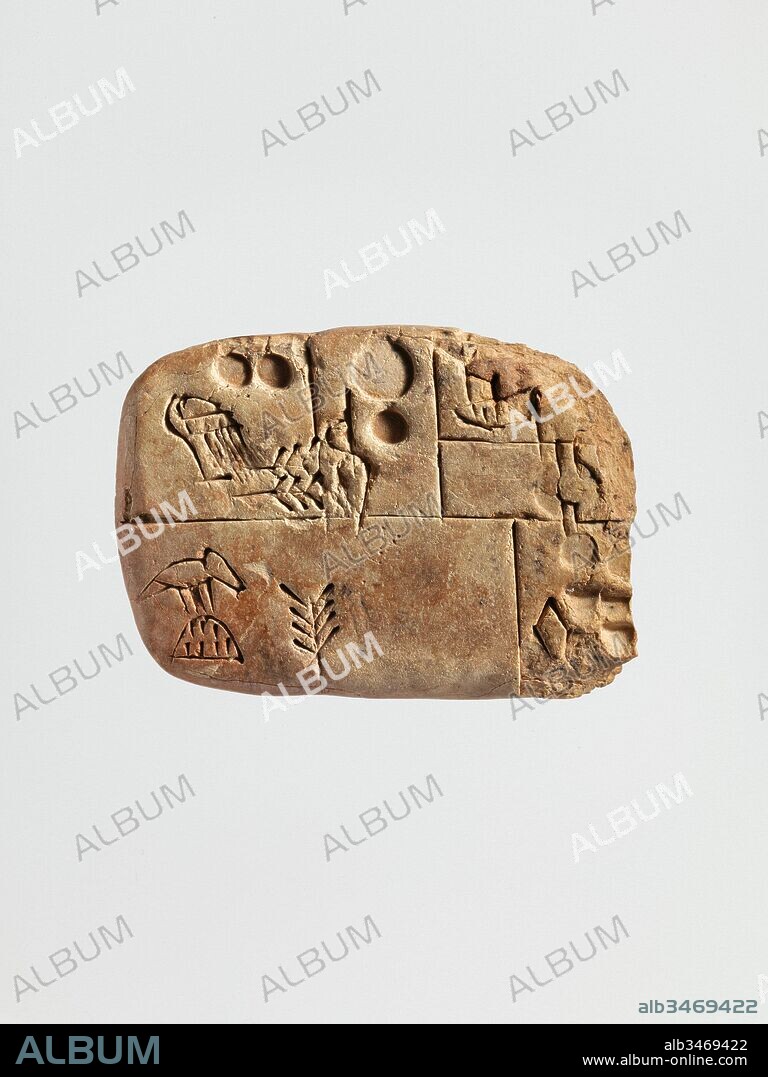alb3469422
Cuneiform tablet: administrative account concerning the distribution of barley and emmer, Jemdet Nasr, ca. 3100–2900 B.C., Mesopotamia, probably from Uruk (modern Warka), Sumerian, Clay, 2.44 x 1.85 x .65 in. (6.2 x 4.7 x 1.65 cm), Clay-Tablets-Inscribed, Of the many legacies left by the ancient civilizations of southern Mesopotamia, the invention of writing is paramount. At the end of the fourth millennium B.C., written language developed in the region, first as pictographs and then evolving into abstract forms called cuneiform.

|
Añadir a otro lightbox |
|
Añadir a otro lightbox |



¿Ya tienes cuenta? Iniciar sesión
¿No tienes cuenta? Regístrate
Compra esta imagen

Descripción:
Ver traducción automática
Cuneiform tablet: administrative account concerning the distribution of barley and emmer, Jemdet Nasr, ca. 3100–2900 B.C., Mesopotamia, probably from Uruk (modern Warka), Sumerian, Clay, 2.44 x 1.85 x .65 in. (6.2 x 4.7 x 1.65 cm), Clay-Tablets-Inscribed, Of the many legacies left by the ancient civilizations of southern Mesopotamia, the invention of writing is paramount. At the end of the fourth millennium B.C., written language developed in the region, first as pictographs and then evolving into abstract forms called cuneiform
Personas:
Crédito:
Album / quintlox
Autorizaciones:
Modelo: No - Propiedad: No
¿Preguntas relacionadas con los derechos?
¿Preguntas relacionadas con los derechos?
Tamaño imagen:
3900 x 5200 px | 58.0 MB
Tamaño impresión:
33.0 x 44.0 cm | 13.0 x 17.3 in (300 dpi)
Palabras clave:
ARCILLA • CEBADA • CIVILIZACIONES ANTIGUAS • DISTRIBUCION • ESCRITURA • INVENCION • LENGUA ESCRITA • MESOPOTAMIA • PRIMERO • REGION • SUMERIAN • URUK
 Pinterest
Pinterest Twitter
Twitter Facebook
Facebook Copiar enlace
Copiar enlace Email
Email
